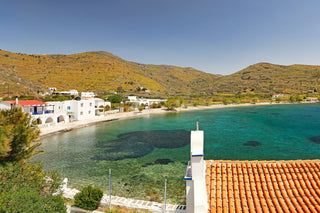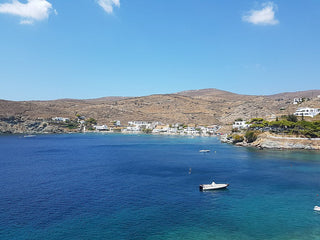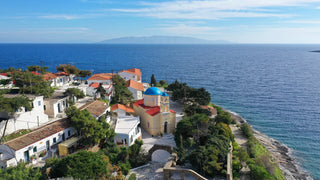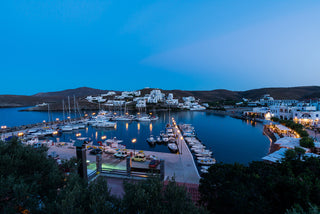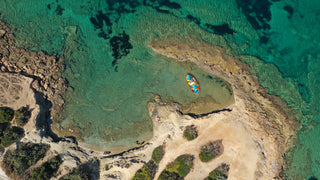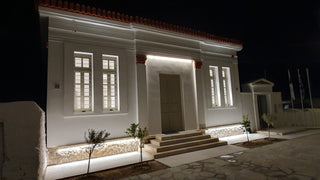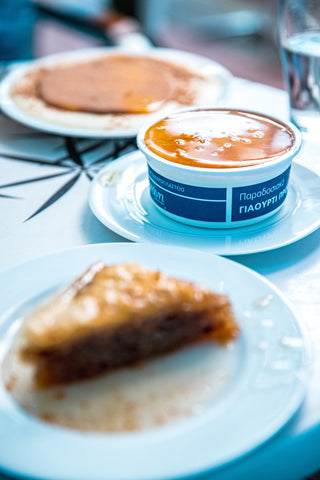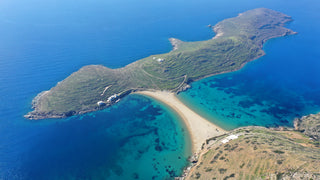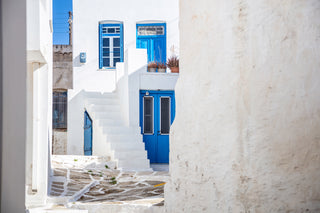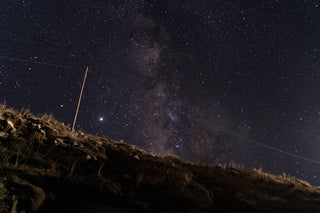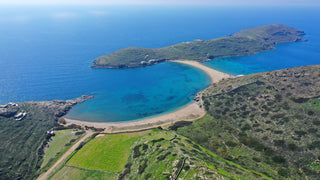History
In a mysterious blend of history and natural splendor, where the human touch meets the magnificent and bountiful gifts of nature in a magical and unforeseen way, the enigmatic Katafyki cave lies secretly nestled in the heart of the earth.
The Katafyki cave, for hundreds of years, has been lovingly preserved in the embrace of Dryopida, one of the most picturesque villages of the Cyclades. It is hidden beneath the village and serves as a connecting link between human civilization and the grandeur of the unfathomable inspiration of nature.
An unfathomable and enchanting underground world, has been echoing the sounds and silences of the villagers incessantly for many years, while it holds the deepest secrets of the islanders, hidden in the depths of Dryopida.
The Katafyki cave is located at the southern tip of Dryopida in Kythnos, at an altitude of about 190 meters. It is believed that Dryopida is built on a basin, which probably constituted a lake on a plateau and perhaps for this reason it was called Syllakas until 1883.
The main feature of the cave is that it consists of a combination of natural galleries and artificial openings. The natural part of the cave has been created by an underground stream, which is believed to have flowed through the cave and carved its walls, providing a wonderful artistic result. The artificial part of the cave was created for the needs of iron ore mining. This justifies the numerous branches, natural or artificial, that appear throughout the cave.

As the name suggests, the Katafyki cave was the refuge of the island's inhabitants where they sought shelter to protect themselves from various hostile attacks: Franks, Turks, and other invaders. Some written sources suggest that religious rituals also took place in the cave, such as the island's inhabitants celebrating in the "large square" of the cave after the Resurrection.
Most locals know it as a mine, and this is what has remained in the minds of most.
Historical records suggest that Katafyki may have been a mining site since ancient times due to the abundance of metal mines in Kythnos. It is noted that iron mining started in 1835, and between 1910 and 1940, it was utilized by foreign corporations for the extraction of iron ore.
Even today, during your visit, you can see large quantities of iron throughout the route inside the cave, as well as remnants of human presence: rails, wagons, tools that helped create the cave's current appearance.

Unfortunately, the explosions made for mining destroyed much of the stalactite decoration.
The cave
The labyrinthine corridors of the cave are 600m long and cover an area of 3,500m². 10 meters after the main entrance is a plateau, the "small square" or "small piazza", and a little bit further down the road, the "large square" or "large piazza".
The route to the stalactite hall is impressive, but the hall itself is a wonderful spectacle.
The floor of the room is composed of a pile of debris, such as marbles and stalactites, on which stalagmites have now formed, which testifies that these landslides occurred in very old periods. To the right of the room, thin sheets of limestone and iron ore are formed.
On the ceiling of the room, there are colorful mammary stalactites with very impressive shapes. The locals have given various names to the stalactites, such as "jellyfish", "embryo", "little bear", and the most impressive has been named "Tower of Babel".

The cave's rocks are stratified in height into schists, marbles, and shales. The cave was used as an iron mine as the primary extraction material was hematite ore.
Continuing the route, the cave ends up in a natural corridor that ends at its southern end. On the right, returning from the southern end of the cave, a labyrinthine corridor adorned with various shapes is hidden. Then we come across a flat hill, to the right of which there is a dangerous chasm. As we proceed and about 20 meters from the hill, there is an uphill opening leading to the "gournaki" (a small stone trough). Nestled in the arms of the stalagmites and stalactites, the "gournaki" plays its own music, as the water here has been running in the same sluggish and slow way for years, creating an atmosphere of tranquility.

To the left of the gallery leading to the "gournaki", there is another, artificial, deep gallery that will take you to the exit. It is approximately 2 km and you will come out in the area of Piadakia or Kyndos.
You will understand while walking in this gallery, from the carts, the wire ropes, and various tools, that it was used for mining activities. Right in front of the opening of the gallery, there is another one that leads to the northern end of the cave, while to the left and back, another opening leads to the initial point, thus closing a circle.
Access to the cave is easy as it is in contact with the settlement of Dryopida. Due to its use as a mine, it contains chasms that made it dangerous for visits until 2015. It is illuminated and its temperature is 17°C, while one can be guided through it in a circular route to the visitable spaces.
The cave is one of the main and famous sights of the island, such as Kolona beach, Panagia Kanala, and the Thermal Baths where our hotel is located, with hot springs flowing into the sea. Do not neglect to visit all four!
Photography: Niki triple, CC BY-SA 4.0, Zde, CC BY-SA 4.0



